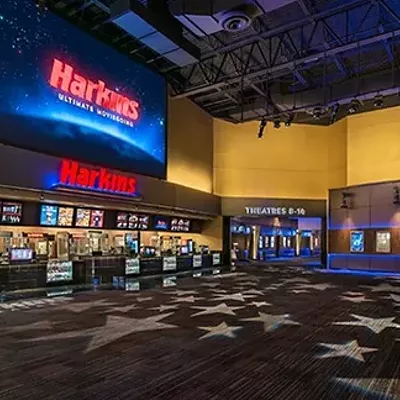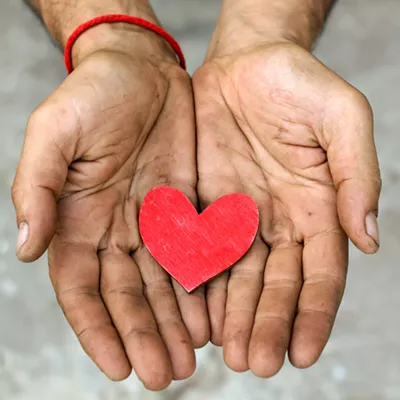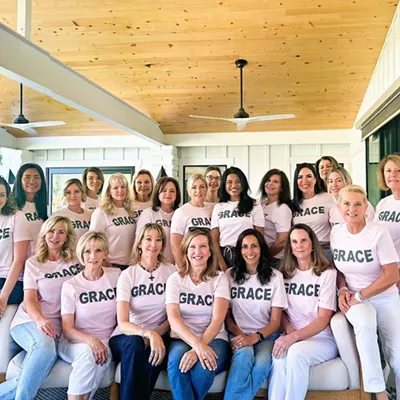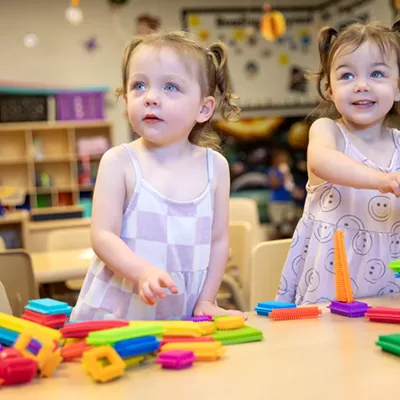The reasons include speeding, drunk driving, red-light running and tailgating. City of Tucson deputy transportation director Albert Elias believes the frustration of traffic congestion also has a lot to do with it. But, he says, "No one makes you hurry except yourself. Maybe motorists should take just a little bit more time for a trip, don't hurry, and not put people's lives at risk."
By the end of July, 31 people had been killed this year in traffic accidents inside the city limits, including seven pedestrians and one bicyclist. This rate is about the same as the previous two years, when a total of 57 and 54 people lost their lives on Tucson's streets.
Fatal accidents this year have occurred all over town. Twenty-Second Street has seen the most with four, but people are killed in every part of the city.
The same is true of all traffic accidents. They happen everywhere, and for various reasons. One factor that isn't directly linked to the number of accidents, however, is traffic volume. Of the four busiest intersections in metropolitan Tucson, only two--22nd/Kolb and Broadway/Kolb--make the city's top 10 accident list. The community's busiest intersection, Campbell and Speedway, isn't even included within the top 20 worst places for accidents, even though almost 100,000 cars a day pass through it.
Twenty-Second Street at Kolb Road has the dubious distinction of being the most dangerous intersection in the city this year, with 60 accidents. In unincorporated Pima County, that top ranking goes to Ina Road and La Cholla Boulevard, which saw 113 accidents over a three-year period.
WHAT CAN BE DONE to reduce this roadway carnage? The opinions are far-ranging but often focus on many of the same factors.
"Pay attention" is the two-word response from Sgt. James Ogden of the Pima County Sheriff's Department. "People get caught up with their cell phones, their radios, or talking to someone else in the car," he says, "but they need to be aware of things around them." He also urges drivers to ensure there is enough space between vehicles in order to avoid rear-end collisions.
Elias from the Tucson transportation department believes three things can be done. First, he says, more police enforcement is possible, but as he points out, "While it's effective, the impact is not long-lasting because the dangerous behavior eventually returns after the enforcement disappears."
Physical improvements such as double left-turn lanes and more bus bays are Elias' second solution. His third is more education to try to persuade people to take just a little bit more time for their trips.
Pima County's traffic engineer, Al Letzkus, indicates his agency also has a three-part program to reduce the number of accidents. Pima County's roadway bond program, he says, will fund a number of changes, including widening some intersections, installing signals at others, and placing raised pavement markings along the edge of roadways to improve nighttime visibility.
The second part of the program is additional enforcement in high-accident areas. The final component is education. Letzkus says the county will soon begin a media campaign to remind drivers to wear their seat belts and not to drink and drive.
Education is also one of the "Four Es" offered by Matthew Zoll. He was the longtime chair and is still a member of the Tucson/Pima County Bicycle Advisory Committee. "We need a multi-prong approach which includes education, enforcement for all, engineering of better facilities, and encouragement so the presence of bicyclists and pedestrians can be expected," he says.
Zoll thinks the community has done a pretty good job concerning bicycle safety, but needs to improve safety for pedestrians. He also points out that the number of fatal accidents involving pedestrians and bicyclists is much higher than the percentage of transportation dollars spent on them. That, he believes, has to change.
Gean Lloyd, last year's chair of the City's Citizen Transportation Advisory Committee, agrees. She says that in Tucson, "Pedestrians are an afterthought, and there isn't a whole lot being done for them."
She is especially critical of the timing of crossing lights at major intersections for those on foot. "It isn't sufficient, so older people and the disabled can only get halfway across. They are stuck in the middle with cars whizzing by. It's not safe, it's scary, and the pedestrians are putting their lives into the motorists' hands."
Instead of suggesting longer "Walk" time for pedestrians, which she knows would cause traffic congestion, Lloyd offers two different approaches to cutting the number of pedestrian accidents. The first would be to reduce overall traffic flow by getting more people out of their cars and into what she refers to as a "seamless" public transit system.
If that's not possible, Lloyd believes prohibiting pedestrian crossings at major intersections, but allowing them mid-block, should be tried. "It's a whole lot safer," she says of her proposal. "It doesn't offer a false sense of security like the intersection does, and there is no need to worry about right-hand turning cars."










